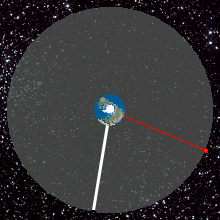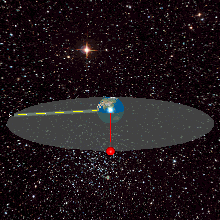Geostationary orbit
A geostationary orbit, geostationary Earth orbit or geosynchronous equatorial orbit[1] (GEO) is a circular orbit 35,786 kilometres (22,236 mi) above the Earth's equator and following the direction of the Earth's rotation.[2] An object in such an orbit has an orbital period equal to the Earth's rotational period (one sidereal day), and thus appears motionless, at a fixed position in the sky, to ground observers. Communications satellites and weather satellites are often placed in geostationary orbits, so that the satellite antennas which communicate with them do not have to rotate to track them, but can be pointed permanently at the position in the sky where they stay. Using this characteristic, ocean color satellites with visible sensors

Geosynchronous satellite
Geosynchronous satellites have the advantage of remaining permanently in the same area of the sky, as viewed from a particular location on Earth, and so permanently within view of a given ground station. Geostationary satellites have the special property of remaining permanently fixed in exactly the same position in the sky, meaning that ground-based antennas do not need to track them but can remain fixed in one direction. Such satellites are often used for communication purposes; a geosynchronous network is a communication network based on communication with or through geosynchronous satellites.

